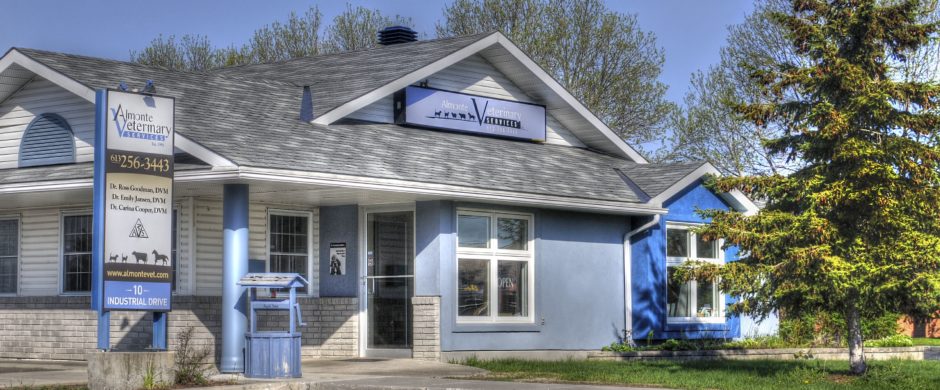If my dog already had X-rays, why might you need to take new ones?
Orthopedic radiographs are incredibly precise and require many details not commonly found in the diagnostic radiographs your veterinarian took to help diagnose the issue. We are very selective about only using well-positioned, appropriate radiographs. A few millimeters can make a significant difference in outcome, and we strive for perfection.
We also use presurgical planning for every TPLO to ensure consistency intraoperatively. This presurgical planning requires a radiographic marker to calibrate the X-ray. We do not typically charge for X-rays if you have already paid for them with your clinic. We ask that you allow us to shoot X-rays in case there are details we need to highlight before surgery. The only thing you may need to pay for in these cases is sedation if required.
I had such a great time at your clinic. Can I come on as a client?
While we often get this question, unfortunately, we cannot see you as a regular client. We work on a referral basis and wish to maintain relationships with the referring clinics. We are also not taking new general practice clients. Dr. Clark only performs orthopedics/rehabilitation appointments and surgery.
I have received multiple quotes; why is your price so different?
There are multiple reasons for this. First and foremost, all Dr. Clark and his designated staff do is orthopedic surgery. Specifically stifle surgery (TPLO, MLP, other corrective osteotomies), hip surgery (open reduction of hips, FHNE, hip toggles), some specific forelimb surgery, and fracture repairs. When your scope of practice is narrow, you become incredibly efficient. Dr. Clark is also highly passionate about orthopedics and wants to keep prices affordable so that all animals can receive excellent care.
We are not a large referral center and do not have the overhead they do. We are also not in Ottawa proper and have lower fixed costs than Ottawa-based clinics. While our staff is dedicated and highly competent, we do not have the staffing expenses and other costs associated with running an emergency and multispecialty referral facility. We are also independently owned and can maintain lower pricing as a result.
Typically, we use Arthrex equipment and plating systems for TPLO. We take pride in using exceptionally high-quality materials.
Is Dr. Clark a board-certified surgeon?
Dr. Clark is not a board-certified surgeon. While his close friend and long-term mentor is a board-certified surgeon, Dr. Clark has not completed a residency and the credentialing process associated with becoming a board-certified surgeon. Board-certified surgeons have proved competent in all aspects of veterinary surgery through rigorous training and evaluation. Board certified surgeons perform all aspects of surgery, whereas Dr. Clark also does not have a strong interest in soft tissue, or neurosurgery, and only performs orthopedic surgery. Board-certified surgeons can be found at Capital City Specialty & Emergency Animal Hospital or Ottawa Animal Emergency and Specialty Hospital. Dr. Clark maintains an excellent relationship with both hospitals and can attest that your furry family members will be in excellent hands at either facility. In addition to the board-certified surgeons present there, they also have a more extensive team to facilitate more complicated cases for anesthesia or pain management.
Dr. Clark has completed many courses and certificates in orthopedics and is well respected in the field. Patients have come from across Canada and parts of the United States to have him perform surgery. Dr. Clark has also had visiting veterinarians travel internationally to learn from him. Every surgery he performs is held to the same standards of excellence set by board-certified surgeons.
What will the recovery look like?
Typically, recovery will take 12 weeks or so until the patient is allowed to resume regular activity. Every patient is different, though, and this will be discussed during the presurgical appointment.
What size of patients are you able to treat with a TPLO?
Our plate sizing goes from 1.6mm (for patients less than 3kg) to 4.5mm (for patients larger than 56 kg). Typically, Dr. Clark performs lateral fabellar sutures in feline patients.
What does the day of surgery look like?
A staff member will call the day before to review any questions and discuss a drop-off time and fasting instructions. On the morning of surgery, you will meet with a technician to review a presurgical questionnaire and take the patient in for surgery.
The patient will be discharged later that day after we ensure the patient has recovered well from surgery. Patients always have the option to bring their furry family members to an overnight care facility for monitoring. We have found that this is typically unnecessary, and we like to get patients back to their families as soon as possible. It is a stressful day for our patients, and we do not wish to make it harder for them.
All other details can be asked at the appointment, and you can ask any questions.
